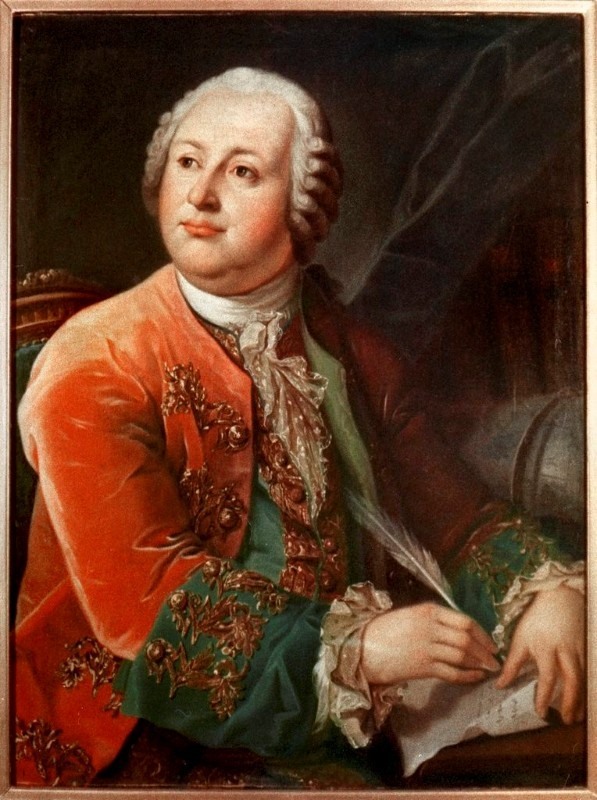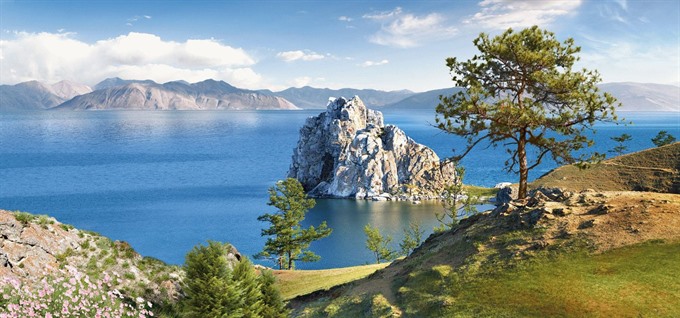 Life & Style
Life & Style

To mark the National Day of the Russian Federation on June 12, Việt Nam News presents an article by Russian Ambassador Konstantin V. Vnukov, who discusses his nation’s rich history and deep Asian ties.
 |
| National hero: A portrait of Mikhail Lomonosov, the founding father of Russian science and education.— Photo courtesy of the Embassy of Russia |
To mark the National Day of the Russian Federation on June 12, Việt Nam News presents an article by Russian Ambassador Konstantin V. Vnukov, who discusses his nation’s rich history and deep Asian ties.
Russia and its Eurasian way
Our National Day--the Day of Russia--has been celebrated for two and a half decades now. It is one of Russia’s youngest holidays, and it marks the establishment of Russia as a sovereign country after the breakup of the Soviet Union. However, our history is of course much richer and consists of both Western and Eastern pages. This explains why our official national symbol since the 15th century has been a double-headed eagle whose eyes look both to the East and to the West.
I would like to begin with a brief insight into the history of our country. The first Russian state, Rus, was created in the IX century with two main centers in Kiev and Novgorod, territorially located on the European continent. Shortly after, Novgorodians began XI-century campaigns to the East that reached the Ural Mountains and eventually overcame the natural border between Europe and Asia.
After the end of the period of the so-called "gathering" of Russian lands, the era of rapid expansion of borders of the Russian state followed. This process was going on different geographical directions –the "window to Europe" of Peter the Great in the 18th century and the discovery of vast territories in Siberia and Far East. Russians reached not only the extreme point of the Eurasian continent, but also lands of North America, having founded settlements in Alaska and California, and even some islands in Oceania.
Russia’s contacts with peoples of many eastern countries were established hundreds years ago. The importance of the Asian vector of foreign policy was entrenched in Russian social and political thought. In the middle of the 18th century, the founder of Russian science and education Mikhail Lomonosov formulated three strategic tasks that the Russian state in order to solve in order to ensure sustainable development for centuries. First and most important of them was, he mused, "Russian power will grow to Siberia and the North Ocean and reach the main European settlements in Asia and America." At the same time, Lomonosov attached great importance to establishing good relations with neighboring countries in Asia.
This course subsequently acquired a strategic character. We need to mention a major direction of Russian social and political thought in the beginning of 20th century, Eurasianism, according to which the potential of the development of Russia was in its role as a “bridge” between Europe and Asia. A famous Russian statesman and scholar Yevgeny Primakov, former Prime-minister and Minister of foreign affairs, stood at the origins of this line in contemporary Russian foreign policy. A part of his political heritage is that tasks set by Lomonosov were embodied in the updated Foreign Policy Concept approved by Russian President Vladimir Putin in November 2016.
Russia, which is often perceived by some countries as European, is in fact the largest Eurasian, Asian-Pacific and more broadly a Euro-Pacific power, two-thirds of which are located in Asia. The Asian part of Russia is famous for huge reserves of oil, gas, coal, gold, metals and minerals. Lake Baikal, the deepest in the world, stores over 20% of the world’s clean drinking water. It may sound surprising, but there are almost one million Buddhists in this part of Russia.
The Russian Federation, as a Eurasian power, is vitally interested in ensuring peace, security and stability in Asia Pacific, the establishment of international mechanisms that embrace the interests of all regional countries. Russia aims to activate the eastern vector of its foreign policy not only in a multilateral, but also in a bilateral format. In this context, we pay special attention to the development of comprehensive strategic partnership with Việt Nam, Russia’s long-standing and reliable friend in the region.
In world history, it is difficult to find examples when people so diverse in terms of language, culture, customs and traditions that are so spiritually close to each other. That is why even the profound changes in the international situation in the last decades could not shake the mutual interest in our all-round bilateral cooperation with Việt Nam.
I am convinced that the development of relations between Russia and Việt Nam is, and will remain in future, an important factor of maintaining security and stability in the Asia Pacific. As we say in Russia: “An old friend is better than two new friends”.— VNS
 |
| Water of life: Baikal Lake the largest freshwater lake by volume in the world, containing roughly 20% of the world’s unfrozen fresh surface water.— Photo courtesy of the Embassy of Russia |




